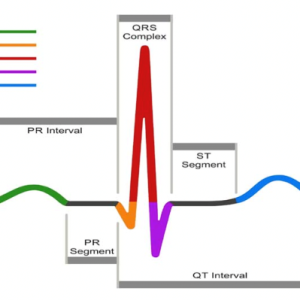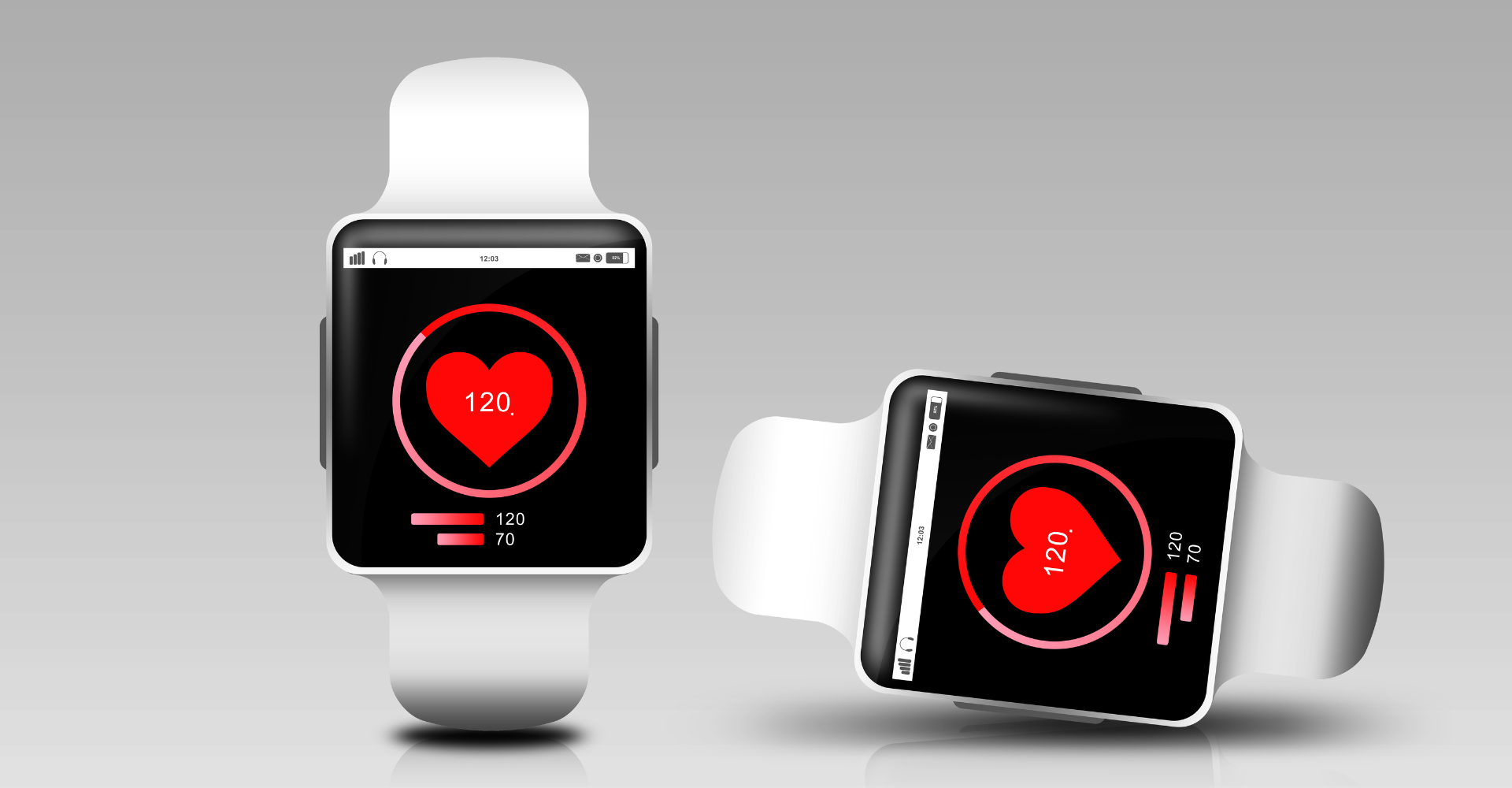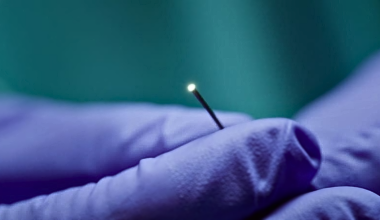Digital watches have taken the world by storm due to their ability to do just about anything with a slight tap or twist of the wrist. One of the most popular is the Apple Watch.
Technology continues to revolutionize the way we stay connected and informed, and the Apple Watch is a standout. Its impressive range of features extend well beyond just telling time. One feature which has gained popularity among health enthusiasts is the Apple Watch’s comprehensive health feature, first launched by Apple in 2014.
A hospital ECG machine uses 12 leads for accuracy. The Apple Watch ECG uses only one.
Therefore, the ECG’s recorded by the Apple Watch should not be considered 100% accurate.
As a reader of The Health Insider, you are hopefully seeking ways to keep abreast of innovation and changes in health and wellness, and also wanting to get more involved. The Apple Watch is certainly a tool that fits the bill.
Since launch, Apple has made a number of major updates to the watch. This has paved the way for its users to become progressively more engaged in their own health management. This article explores one of the most surprisingly beneficial areas worthy of attention in the Series 8 Apple Watch introduced in 2022 – Heart Health.

Heart Health Feature on Apple Watches
Arguably, you could say that Apple introduced the Heart Health feature to ease the user’s understanding of this seemingly complex area. However, an issue that remains is that many general users struggle to make sense of health-related data and statistics. While the Apple Watch does a great job at displaying statistics about its users’ health, many may find it difficult to understand what the charts and units infer about their heart health.
The Health Insider will attempt to explain the graphs and metrics on the watch and what they represent. In so doing, we hope to help you in decoding the messages appearing on your watch and what they may be conveying to you about your heart health.
Introduction to Heart Rate and the Electrocardiogram (ECG)
The Electrocardiogram (ECG) feature on Apple Watches allows the user to measure their heart rate. This value is displayed in beats per minute (bpm) and is illustrated through a repetitive wave-like pattern.

As suggested by the units, heart rate is the number of times the heart beats in one minute. Heart rate can be measured manually by the pulse rate or by using the ECG.
In clinical settings, the ECG is a machine which attaches leads (electrical wires or electrodes) to an individual’s skin near the heart to record electrical activity. The greater the number of leads, the more accurate the ECG reading is. The leads pick up heart rhythms and converts them into electrical signals which are displayed as the wave like pattern shown below.

This pattern will look like the one portrayed on your watch. It shows the various phases your heart enters as it relaxes to fill up with blood (TP complex) and contracts to eject blood around the body (QRS complex).
It is not necessary for you to be able to decode such patterns. The Apple Watch has a built-in feature which can pick up various irregular heart rhythms such as Atrial Fibrillation (AFib). However, it is important to be able to determine what the value in bpm is trying to tell you. In extreme cases, understanding this value can save lives.
For this, it’s important to first understand resting heart rate and the several factors affecting it.
Factors Affecting Heart Rate
Heart rate can be influenced by various internal and external factors such as age, diet, level of activity, preexisting diseases etc. Here is a summary of how some of these factors may impact heart rate.
| Factor | Impact on Heart Rate | Explanation | Manifestation on your Watch |
| Age | As an individual grows older, resting heart rate decreases. | Scientists are still exploring why resting heart rate in healthy people drops as we age. | A teenager may notice a resting heart rate is a bit higher than an adult or senior citizen. |
| Level of Activity | As level of activity increases, heart rate increases. | An adult at rest will have an average resting heart rate of around 60-100 bpm. However, the same adult’s heart rate while running a marathon could go up to around 160 bpm. This is due to their body’s increasing demand for oxygenated blood. | One can expect the value on their watch to dramatically spike when running or exercising. It may take some time for the value to go down after activity is halted. |
| Pre-existing Diseases | Some diseases may dispose individuals to lower or higher than usual resting heart rates. | An individual with diabetes may have a higher resting heart rate due to elevated blood glucose levels. This makes the ‘high’ resting heart rate normal for the individual. | One can expect the value and ECG graph to align with a ‘high’ heart rate even at rest if they have a disease such as diabetes. |
Your Apple Watch is programmed to alert you if your heart rate is above or below what is considered normal. This relative approach to resting heart rate can vary from person to person.
We suggest that you ask your family doctor to measure your resting heart rate if you have not already done so. By knowing this, you can interpret the device’s information accurately and avoid confusion.
How Reliable is Apple Watch Heart Data?
Apple has taken a great step towards the future of healthcare enabling patients to take more control over their health. But just how reliable is the information you are being fed about your own health?
The ECG’s recorded by the Apple Watch should not be taken as 100% accurate. Furthermore, you will want to confirm any concerning readings with a licensed medical professional. It is possible for the readings to be misunderstood or interpreted as showing something life-threatening such as atrial fibrillation (AFib). Atrial fibrillation is a type of irregular heartbeat that occurs when the heart’s upper chambers (the atria) beat out of sync with the lower chambers (the ventricles).
It’s important to understand that a hospital ECG machine uses 12 leads for accuracy. The Apple Watch ECG uses only one.
With only one lead there is a high chance for false positive detection of dangerous heart rhythms. What makes this more troubling is the fact that heart rhythms such as AFib are generally rare in young individuals compared to elders. The rarer the conditions, the more likely the event of false positives. This could pose a problem given that the majority of apple watch users are below the age of 42.
While the Apple Watch gained from the approval and admiration of Dr. Ivor J. Benjamin, former president of the American Heart Association, clinical trial data shows that 10% of watch ECGs were uninterpretable.
This value is high when compared to other watches produced for similar detection. An example of this would be Alivecor. Only 4% of their watch ECGs were uninterpretable. Additionally, calculations carried out by Dr. Venkatesh L. Murthy at the University of Washington showed that for every 20 positive AFib results, only 1 person will actually have suffered from AFib. This means 19 individuals will receive false positives.
These errors deem it crucial to get an opinion from your family doctor before concluding anything regarding your health. Now, more than ever, there is a need to view health from a holistic point of view. Unfortunately, robotic systems such as the Apple Watch fail to incorporate various social and physical determinants of health which are otherwise important in determining the reasons and likelihood of a fatal event.
We believe that Apple has some work to do if it is to be taken seriously for heart health. This should not detract from some of its features that are more reliable and have led to the watch’s huge success. Features such as tracking oxygen levels, hand hygiene, sleep detection and ovulation tracking are useful for their customer base.
Moreover, there are a variety of other watches, wearables, and apps to choose from which are more accurate than the Apple Watch. Check out our piece on Health Wearables You Must Know About for further guidance on what digital watch/app is best catered to your specific health interests.
In this tech-centric generation, we will continue to explore and comment on the various health tech options that catch our eye. Let us know if there’s a specific device that you’d like us to cover by emailing us at info@TheHealthInsider.ca.
The information provided on TheHealthInsider.ca is for educational purposes only and does not substitute for professional medical advice. TheHealthInsider.ca advises consulting a medical professional or healthcare provider when seeking medical advice, diagnoses, or treatment.











